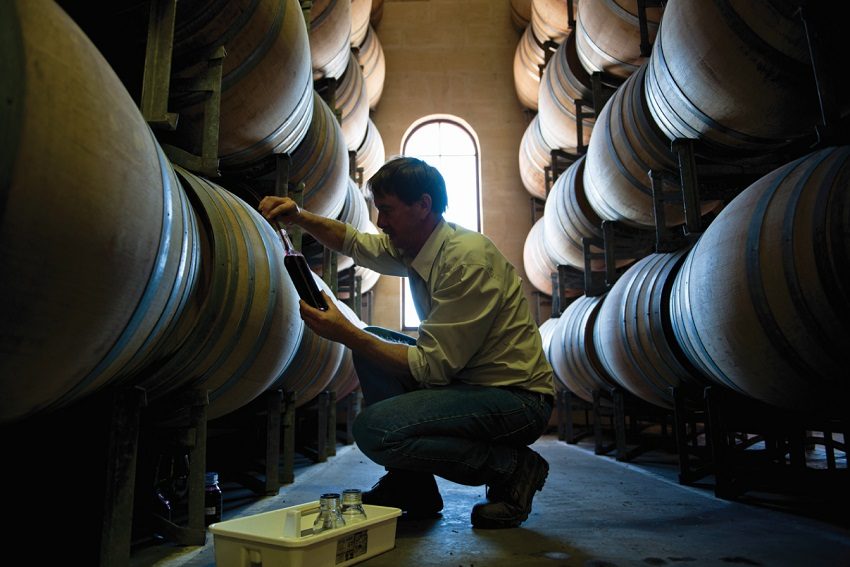Cabernet and Merlot prove brothers in charms for Leconfield

Featuring in the top 10 of the latest Hot 100 Wines South Australia, Leconfield’s 2015 Cabernet Merlot is Coonawarra to the core.
 Doctors of medicine pop up in the history of Australian wine like an endlessly repeating prescription. Their effect has been more than therapeutic.
Doctors of medicine pop up in the history of Australian wine like an endlessly repeating prescription. Their effect has been more than therapeutic.
The significance of figures such as Christopher Penfold, Henry Lindeman, Alexander Kelly and Max Lake in the development of our winemaking over the past two centuries is difficult to overstate. Dr Richard Hamilton, plastic surgeon and vigneron, is part of this long line, and also has a fair portion of his own family history breathing down his neck – his ancestor and namesake planted vines in Marion in the late 1830s and made some of South Australia’s earliest wine.
Already the owner of a McLaren Vale winery, Richard Hamilton took over a sizeable vineyard in the Coonawarra from his veteran winemaking uncle, Sydney, in 1981. The vineyard and winery, dubbed Leconfield (both wineries now carry the name), is one of the region’s most prestigious producers.
The Coonawarra is chiefly (and rightly) famous for its Cabernet- Sauvignon, so it’s hardly surprising that Leconfield’s entry in the top 10 of Hot 100 Wines was a 2015 Cabernet Merlot.
Convention has it that Merlot’s supporting role is to fill in the lull that can occur in the middle palate of Cabernet or else to soften the main grape’s sometimes austere character, but Leconfield’s senior winemaker, Paul Gordon, sees the pairing more as a happy marriage of two tannins.
“The tannin structure of Merlot is different from Cabernet,” Gordon says. “I’ve never been one to really consider that Merlot necessarily needs to be a soft variety – I think Merlot needs to be a wholesome variety in its own way, so our own straight Merlot is a pretty well-structured wine.
“Those wines come together and seem to balance each other’s tannins out.”
Making wines more ready-to-drink is an increasing factor in Leconfield’s thinking, Gordon says, but that doesn’t mean the wines won’t retain their ability to age.
“We’re putting in a few changes in our systems so that the wines are more approachable as young wines. People often don’t have the patience to cellar wines, but we still want to reward those who do,” he says.

While winemaking at Leconfield has always been run along the lines of the modern philosophy of minimalist intervention, Gordon says a lot of work goes on behind the scenes to make this possible.
“I think the same applies to the medical profession as it does to winemaking – ‘First, do no harm’ is probably the adage for wine. To that end, we always make sure that the fruit from the vineyards looks the best that we can grow it, so that it’s nice and rich and full, and if we can do that, we don’t have to put in so much effort in the winery. I won’t say the wines make themselves, but you can get a pretty good head start to make sure you have a decent product at the end.”
Because of the different ripening times of the two varieties (Cabernet is notoriously tardy), the wines are made in separate batches and blended at the end, a process that leads inevitably to some good-natured argy-bargy in the winery, Gordon says.
Gordon has been making wine for Leconfield for 17 years, and worked in the region for 10 years before that. He says the style of Cabernet, and of Coonawarra wines in general, has changed markedly in that time. Twenty years ago, leafy, capsicum characters were all the rage.
“Now there’s a push towards riper fruit flavours, more blackberry and cassis,” Gordon says. He says the change is driven partly by stylistic preference, but also by climate – the vintages are now warmer and earlier.
Interested punters may have trouble finding the 2015 Cab-Merlot, but Gordon is happy to recommend its successor. “Every year isn’t quite the same, but 2016 was a similar year to the 2015 – quite warm, and it produced rich and ripe fruits.
“We still think we’re a pretty special region down here, for Cabernet and for Merlot. It’s a pretty marginal climate that allows the fruit concentration to shine through.”
Shine on.